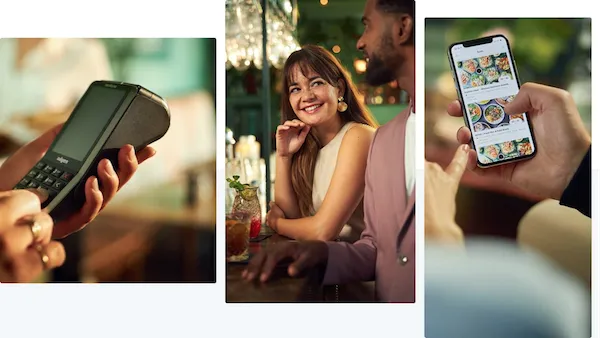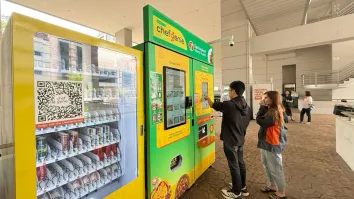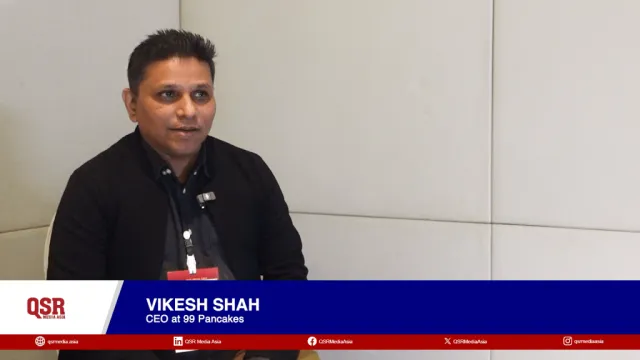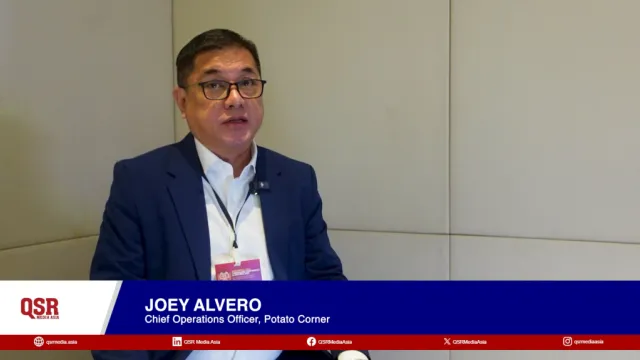
The value of understanding the full customer journey, and how payments can give as online experiences surge
We speak with Ben Wong, Vice President of Business Development APAC, Adyen on why payments and unified commerce are relevant to QSR brands now more than ever.
Think a food and beverage business is solely about what’s on the menu? Well, think again.
Gone are the days when ordering starts only at the counter in-store. New technologies aren’t just overhauling diners’ experiences, they are transforming the entire buying process.
Understanding such journeys is key, especially during this period when demand for more online experiences is surging. Payments is expected to play a critical role, considering customers are seeking more seamless and hassle-free engagements.
Adyen Vice President for Business Development in APAC, Ben Wong, makes a case for a unified commerce approach – why customers should be in the middle of the shopping experience for QSRs to further understand them and gain better insights for future decisions.
Wong started his career in payment technology supporting merchants across verticals including ecommerce, retail and digital services. Leveraging his experience in operations and technology, he moved on to provide technical sales consultancy in Adyen before helming his current role.
In our Q&A with Wong, he expounds on unified commerce, why chains should look at personalised engagements and where payments are headed.
QSR Media: First of all, what is unified commerce? What are the benefits to a QSR? Why even identify the customer?
Wong: Unified commerce is often mistaken as omnichannel because a unified commerce approach looks at multiple channels and omnichannel, by definition, means multiple channels.
Omnichannel is a good start when an organization is trying to connect online and offline experiences. But unified commerce really helps to bring all the experiences together, whether they are online or offline, by placing the consumer in the middle of the entire shopping or QSR experience.
“A unified commerce approach firstly helps to reduce silos and increase efficiencies by not duplicating efforts across multiple channels.”
Unified commerce places the diner in the center of all transactions. From the organization’s point of view, a unified commerce approach firstly helps to reduce silos and increase efficiencies by not duplicating efforts across multiple channels. Moreover, it’s important that businesses understand that it’s not just about ordering in-store or ordering via a website anymore.
Diners today are much more complex, and there are more ways to purchase and engage. For a QSR, you can imagine a typical customer experience to involve ordering at the counter, at kiosks, online or even via a delivery partner.
Ultimately, businesses want to be able to identify diners using unified commerce in order to build customer loyalty, or to simply gain better data, and use insights from that data to make relevant business decisions.
QSR Media: Should QSRs personalize customer engagement? What are the concrete benefits?
Wong: If a brand that you purchase from remembers that you always buy a family meal on weekends, and sends you vouchers to take 10-15% off your usual order every now and then, would you order from it again? Of course you will.
Personalizing customer engagement is not just about calling your customer by his or her first name, but how you can make the relationship more meaningful. Repeat purchases is just one of the many benefits I can quickly cite.
With payments data, you can build more meaningful engagements with your customers. For example, purchase frequency and location help you better understand your customers’ needs, such as how convenient it is for the customer to order from you.
“Personalizing customer engagement is not just about calling your customer by his or her first name, but how you can make the relationship more meaningful.”
The payment methods the customer uses also let you understand his or her preferences. For example, is credit card payment preferred? Or a mobile wallet like Apple Pay? Do you enable tokenization or contactless payments? Should you be looking at local payment methods?
Knowing these preferences and enabling customers to pay the way they want will help you create better ordering and checkout processes – all of which help boost brand experiences and revenue.
QSR Media: Speed is a clear factor in brands wanting to have a more seamless payment system. From your perspective, what does this say about the modern consumer nowadays?
Wong: We live in an era of instant gratification, with various services touting same-day deliveries and even one-hour deliveries – QSR works with an even shorter timeline. Of course, while most customers still expect to queue in-store (you can quote Singaporeans on our queuing culture), no one would wait ten minutes to get to the front of the counter if there’s an easier way.
When there is a time crunch, such as during lunch hour in the CBD, people will choose the quicker option. If customers know that a particular QSR has a long queue but clears their lines really quickly, they will go for that option. Making things convenient for your customers is key.
The same applies for online experiences. Whether customers are ordering via kiosks, apps or websites, businesses need to consider how to make the ordering process easier and the checkout payment flow more seamless. Because quite frankly, customers are more in control than ever, and failing to fulfil their needs can lead to repercussions for brands.
QSR Media: Where do you see payments headed, tech-wise?
Wong: It’s hard to predict what would be the next big thing in payments, but we do see the trend going towards cashless and contactless payments.
The emergence of mobile wallets was already apparent, and is now accelerated by the global novel coronavirus pandemic we are facing as the demand for more contactless payments surge.
However, if you look at the funding sources behind many of these wallets, they are largely still card-based payments, online banking, or cash top-ups. The fundamentals have not changed, but payments tech will help make things more seamless on the consumer side.
“Payments will continue to be a strategic driver of brands in addressing evolving customer expectations, unified commerce and seamless payment experiences.”
What’s vital, though, will be the role payments play in transforming businesses. Payments is and will continue, to be a strategic driver of brands in addressing evolving customer expectations, unified commerce and seamless payment experiences.
Partnering a payment service provider and having a robust payment platform that is able to quickly adapt will be even more important. We are glad that our core platform allows us to do that, and continuously offer the latest tech to our merchants.
QRS Media: How can QSR chains entice customers to make digital payments a better experience for them?
Wong: An F&B business is never just about the food or beverage. The old business mindset of “if my food is good, customers will queue for it” can only be seen as arrogant and myopic.
Brands now need to look at the full customer journey, and its various touchpoints. Making payments seamless for customers is a quick-win when it comes to creating a better QSR experience.
Brands also need to understand that you may not get feedback for the positive experiences you’ve created because most people never leave reviews for F&B establishments they visit – except when they have encountered a really bad one – like the time they waited 45 minutes because of poor cashiering, or can’t pay with a popular payment method like credit card or Apple Pay!
The idea with seamless payments seems counter-intuitive, it needs to get out of the way of your whole dining experience. The more seamless you make it, the quicker your customers get to enjoy their food, the more likely your customers remember the frictionless experience. And perhaps even if there is a line, they are more likely to wait a little, thanks to the positive customer-brand relationship you’ve built.
Check out Ben’s presentation on payments in the QSR space below:
About Adyen
Adyen is the payments platform of choice for many of the world’s leading companies, providing a modern end-to-end infrastructure connecting directly to Visa, Mastercard, and consumers' globally preferred payment methods. Adyen delivers frictionless payments across online, mobile, and in-store channels. With offices across the world, Adyen serves customers including Facebook, Uber, Spotify, Agoda, Cathay Pacific, the Cotton On Group, Guzman Y Gomez, Grab, Klook, Love Bonito, Sephora and Singapore Airlines.
Find out more at: https://www.adyen.com/food-beverage-payments




























